This week, the five-issue series Ms. Marvel: Beyond the Limit comes to a conclusion, but will Kamala get the classic Bollywood happy ending? The main review contains an embiggened fist full of secrets, so scroll on down to the Rapid Rundown if you’re looking for some spoiler-lite mini-reviews.
What did you think of this week’s fresh Marvel Comics issues? Let The Beat know, here in the comment section or over on social media @comicsbeat.
Ms. Marvel: Beyond the Limit #5
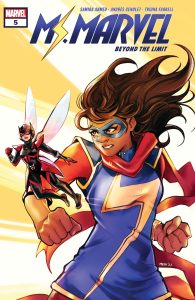
Artist: Andrés Genolet
After Credits Artist: Zé Carlos
Color Artist: Tríona Farrell
Letterer: Joe Caramagna
Cover Artist: Marshal Ahmed
In the final chapter of Ms. Marvel: Beyond the Limit, Kamala and her antagonist Qarin face-off in a tug-of-war over their shared pool of powers. Featuring clever twists, bright characters, and some genuinely funny dialogue (“Churrostan”), Beyond the Limit has been an unexpected delight. Issue five brings the main conflict to a satisfactory enough close while promising further explanation in a sequel series (which I guess is an alternative to an ongoing series, probably based on the idea that marketing five-issue arcs which are subsequently collected into graphic novel-style TPB collections is easier than getting new readers to jump on at issue #546 – whatever, just give me more Kamala).
While it was revealed in a previous issue, I appreciated the twist on the multiverse concept that is defining much of Marvel’s storytelling on both the page and the screen these days. Although parallel universes has long been a key part of the foundation of the Marvel Comics universe, the recent critical and financial success of Spider-Man: Enter the Spider-Verse means that team-ups among multiple “variants” of an individual character are all the rage.
Beyond the Limit is well aware of this fact, and over the course of its five issues, it plays with your expectations accordingly. It turns out that the doppelgänger Kamala is after is actually a distinct, shape-shifting character, Qarin, and what we thought was a universe that was closely akin to a Bollywood musical actually turned out to be an illusion created by the same.
I had swallowed these red herrings hook, line, and sinker, given how plausible they had seemed as a set-up for the series, and so I was delighted to have my expectations subverted. Even if “shape-shifter steals hero’s face” is almost as reliable a Marvel Comics narrative device as “multiversal team of variants” has become, it’s all about the slight of hand in the presentation… and it creates a neat echo of Kamala’s super heroic origins.
Another aspect of Beyond the Limit that I especially enjoyed was the inclusion of food in the narrative. I am always a sucker for food in comics, but it’s especially delicious when its used for a narrative purpose in super hero books – another example is Deadpool’s need to consume high-calorie food items after a battle in order to facilitate his healing factor.
In Beyond the Limit, Kamala must destroy meal after meal because she and the antagonist, Qarin, are sharing the same pool of energy for their abilities. However, in addition to serving an expository function – demonstrating a source of conflict between Kamala and Qarin – it’s also extremely entertaining when Kamala remarks mid-confrontation that she feels like she “could murder ten gyros right now.”
Another element of the story I enjoyed was the role played by Kamala’s supporting characters, particularly Nadia Van Dyne, who was especially important in the story’s final chapter. And the Wasp’s appearance builds on elements introduced in The Unstoppable Wasp: Agent of G.I.R.L. and Champions, making her an especially welcome addition to the narrative.
Beyond the Limit was a fun and interesting story that went to some unexpected places, all while allowing Kamala plenty of time to shine (and to make a lot of funny food jokes). Along with a solid antagonist and supporting characters, Beyond the Limit is a recipe for super hero comic success.
Verdict: BUY.
Rapid Rundown!
- Amazing Spider-Man #1
- In the decade since I started reading ASM, I’ve read six different “fresh starts” for Peter Parker. And while all of them are similar in style, this is the one that might interest me the most. It’s not just that this issue ignores the recent Spidey trend of having three-four backups to set up spinoffs. Zeb Wells writes a very classic, down on his luck Spider-Man that can’t deal with a world that’s passed him by. Everyone he loves is moving on with their lives and Pete doesn’t seem to realize it. Sure, there are tastes of the past here: John Romita Jr. and Scott Hanna are killing it on the line art and the return of oft-forgotten Digger (last seen in 2003 and also drawn by JRJR and Hanna!) can’t be ignored. But the book seems to be moving forward for the first time in a while, even if that movement has slow pacing in this issue. Even JRJR’s art feels smoother and fresher with the colors of Marcio Menyz. I’m not saying that this issue is a showstopper. But it’s one of the strongest introductions to Spidey I’ve seen in a long time, and I’m definitely looking forward to seeing where things go. —CB
- Hulk: Grand Design – Madness #1
- This week, the Grand Design franchise continues with part two of Jim Rugg’s Hulk: Grand Design, covering 40 years of Bruce Banner’s 60 year character history. In Rugg’s retelling of the Hulk saga, the central focus is on Banner’s struggle to accept his debilitating condition. Throughout the character’s long history, Banner and Hulk have been separated and recombined on multiple occasions. Each time, Bruce Banner is exposed to gamma radiation (or uncombined from the Hulk), the character is left incomplete, unable to stay alive, incapable of functioning in society, and close to death… But it always leads to some wicked monster fights — after all, Hulk is part Frankenstein, and part desperate parent trying to save a child from underneath a car — and some wicked laughs — Betty Ross’ memoir, Hulk Fiction is named after Incredible Hulk #441 with a creative team including Angel Medina, Robin Riggs, Glynis Oliver, and Electric Crayon. Artistically, Rugg leans into the “Design” part of Grand Design, masterfully playing with the color, composition, and style to match each Marvel Comics era. Even the Jersey Shore Hulk of the late 90s and early 00s. Although Rugg’s art style changes to match each era, a switch signified by updates in the Marvel Comics’ Hulk logo, he unifies the look of Hulk: Grand Design – Madness through his commitment to playing with design and bright color against a backdrop of muted grays and yellows. —ROK
Next week: Giant-Size X-Men: Thunderbird #1!


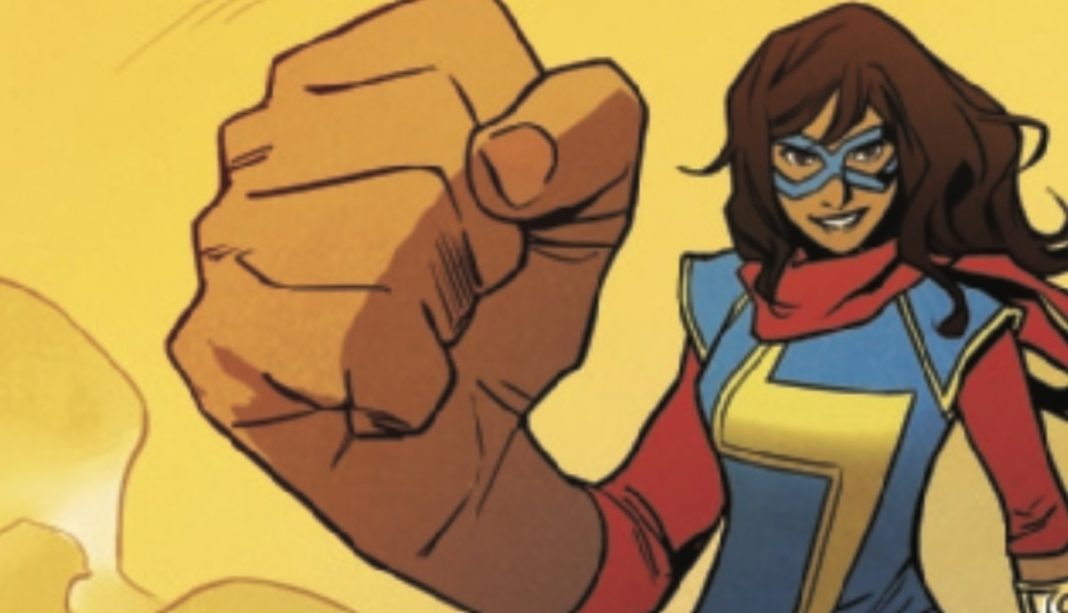
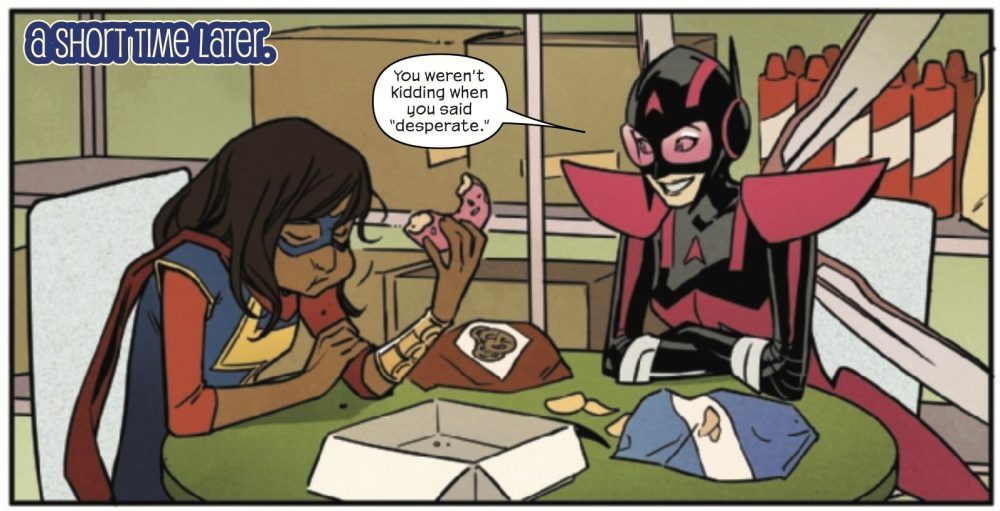
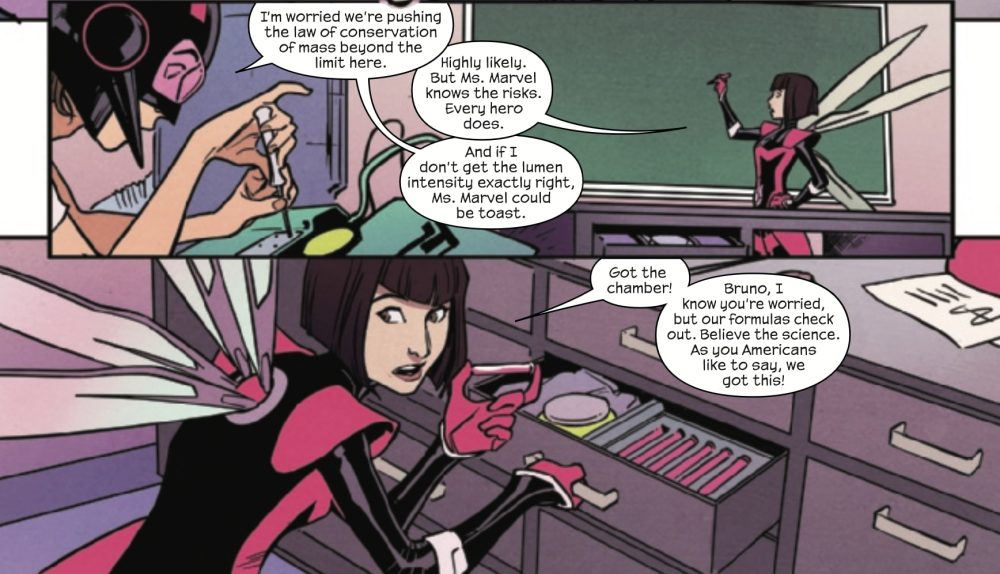
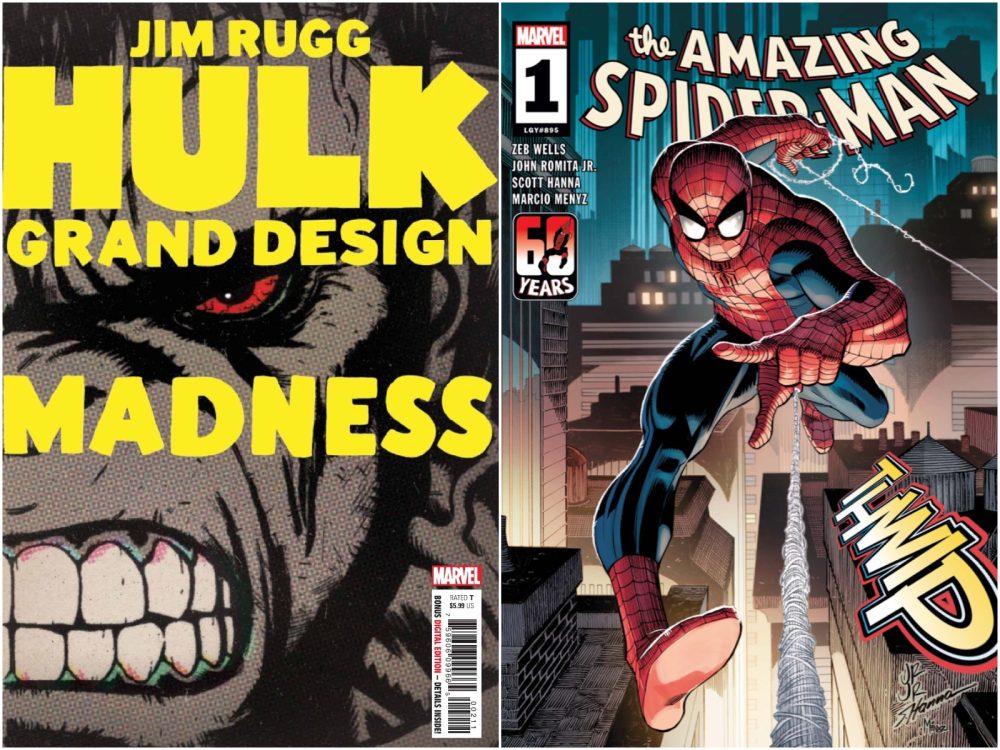
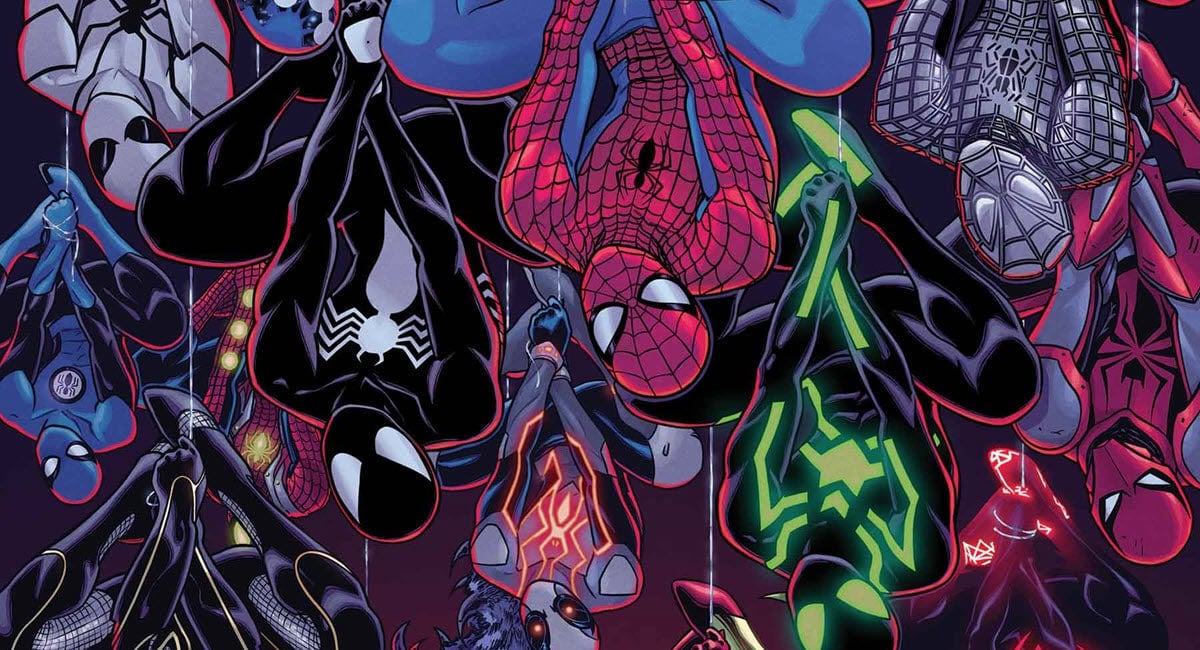




Yeah I love the way they put the food in the story and I’m really looking forward to the ending, hopefully it’ll be a satisfying one.
Comments are closed.